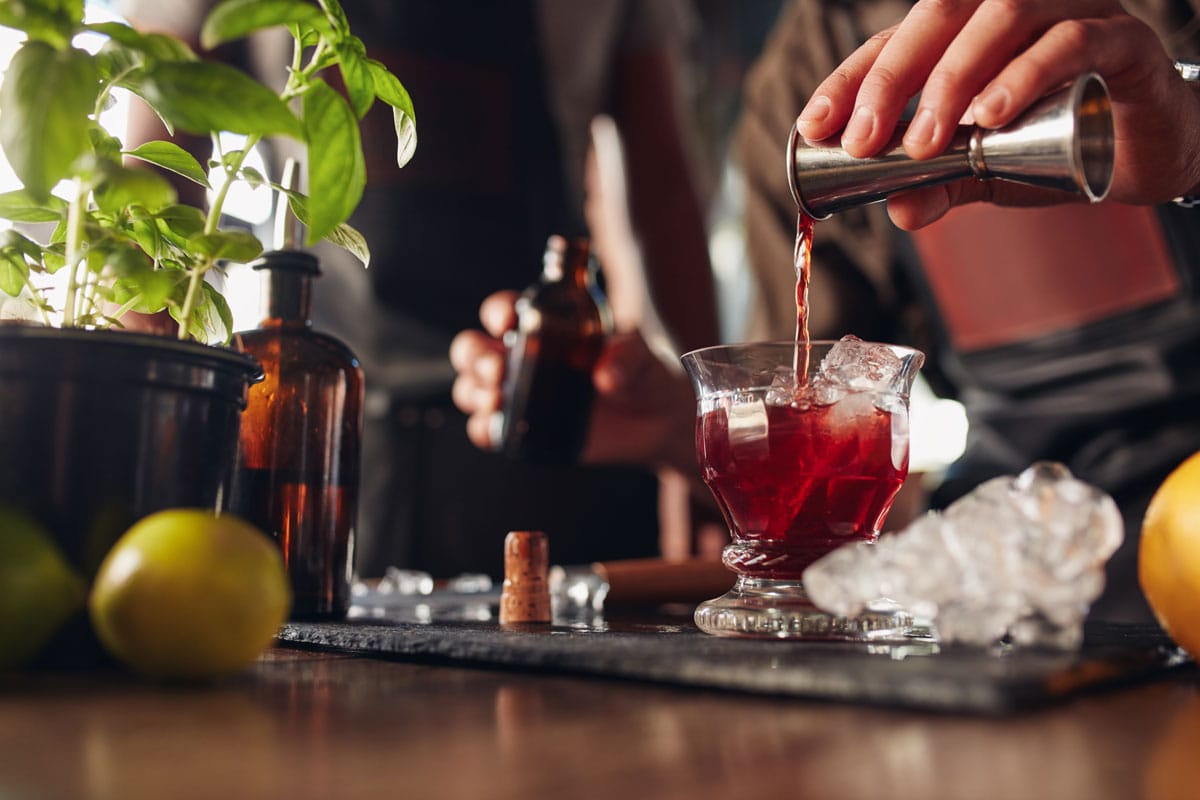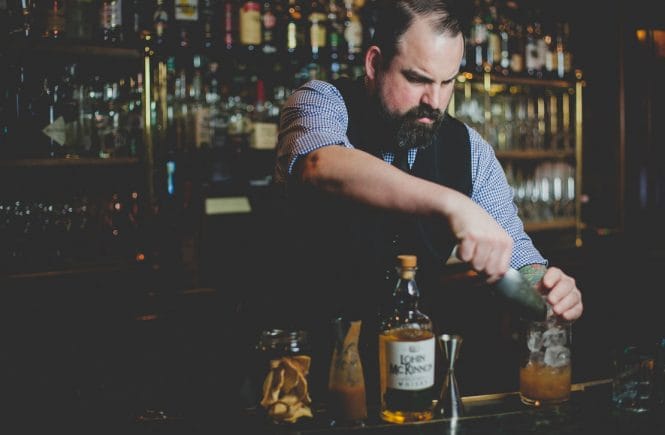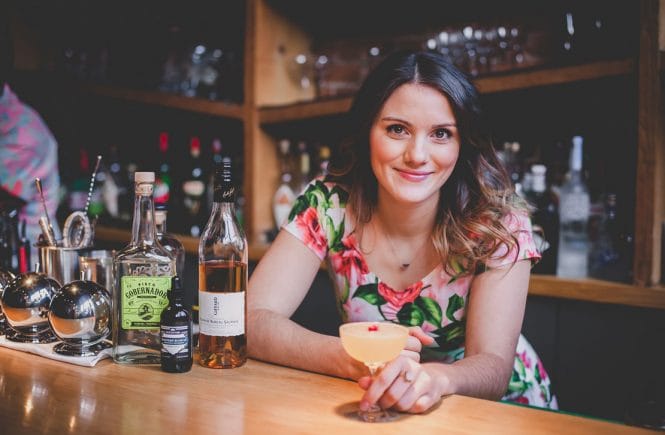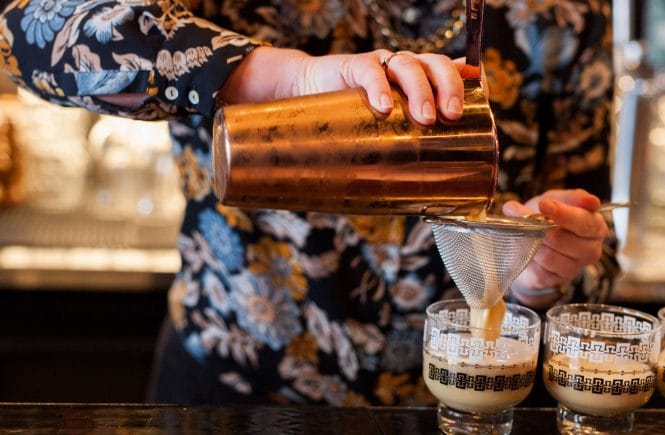Your primer for the the lexicon of liquor

Cocktails have their own vocabulary, a richly evocative lingo that has evolved over the years from the barkeeps who sling the drinks, the customers who swill ’em and the scribes who take note of it all.
Here are some of the most useful expressions to know.
Styles of drink
Cocktails generally come in one of two styles: shaken with ice in a cocktail shaker (drinks made with juice or dairy) or stirred with ice in a mixing glass (spirits only drinks such as martinis or manhattans).
If a cocktail is served in a stemmed cocktail glass without ice, it is served up; in a short non-stemmed glass without ice it is neat; with ice cubes it is on the rocks. The word straight usually refers to unmixed spirits. Long or tall drinks have soda or tonic water added to them, for instance, a gin and tonic.
The sour is a family of drinks featuring spirits, sweetener and citrus, such as the Margarita. Punch typically has five ingredients (sweet, strong, sour, spicy and weak) and a cup is a smaller portion of the same. A highball comprises spirit and mixer in a tall glass, as in a rum and cola. A toddy is liquor and hot water, sometimes with spice and sweetener. A cobbler is served in a tall glass over crushed ice.
Virgin or unleaded means a drink made without alcohol, aka a mocktail.
The martini
A Martini is a stirred drink of gin, dry vermouth, occasionally orange bitters and its own terminology. A perfect one is made with equal parts sweet and dry vermouth. A burnt Martini features a peaty scotch rinse, a swirl of liquid inside a glass. A dirty one is made with olive brine. A Gibson is a Martini garnished with two pickled onions, in honour of the voluptuous women drawn by artist Charles Dana Gibson in the early 1900s.
Fun fact: A Martini made with vodka is technically known as a kangaroo.
Glassware
Stemmed glasses include the V-shaped cocktail or Martini glass or the shallow, rounded coupe, as well as tall narrow flutes, and the Nick & Nora glass, an elegant vintage shape that’s making a huge comeback.
Stemless glasses are either short and stubby (rocks or Old Fashioned) or tall and narrow (Collins). There are also a number of specialty glasses, such as tiki mugs and julep cups.
Measures
As a unit of measurement, a jigger is typically about 1½ ounces; the word is also used for the tool for measuring spirits. A finger is an informal measure of about an ounce; so is a pony. In Canada, a double is a drink made with two ounces of spirits; in the U.S., it is typically made with two jiggers (three ounces). A dash is an eighth of a teaspoon.
Cocktail
Then there’s the word cocktail itself. Its historic definition is a “bittered sling,” that is, spirits, sugar, water and bitters; it’s the presence of bitters that elevates a mixed drink to a cocktail.
But how did the name originate? It’s been suggested that it was named for an Aztec princess, or maybe the egg-shaped measuring cup called a “coquetiere” in old New Orleans, or perhaps a drink spout made from a rooster feather.
The truth may not be so romantic. A few years ago, the great cocktail historian David Wondrich discovered a 1785 English reference to horse dealers who would use ginger, or sometimes pepper, as a suppository to encourage a horse to cock its tail jauntily, making it show better.
“Cock-tail” thus entered the lexicon as a piece of slang that was “used figuratively for encouraging or spiriting one up” – and referred specifically to a drink with ginger or pepper added to it. Eventually the spice was replaced by bitters, and the origins were (thankfully) forgotten.
—by Joanne Sasvari




